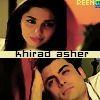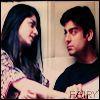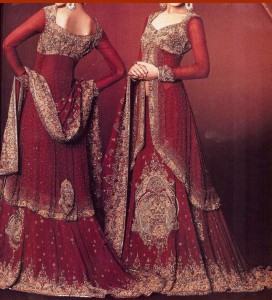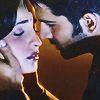Posted:
Iqra walks in with a tray in hands
Iqra- Garma garam chai hazir hai!
Alina - Lao mein daal deti hun.
Sadaf - Ooh, Iqra do you have those round biscuits with holes in them.
Fariha - Well, of course she does! Uske bagair kabhi chai pilayi hai hume, bhala?
Iqra - Yeah. 😆 They're right here. [passes plate to Sadaf, who gobbles three down right away] So, mere aane seh pehle kya baatein chal rahi thi?
Fariha - Woh, kapron ki baatein chal rahin thi. There's like 3 shaadi's I have to attend this year aur pehne ko kuch nahi! My sister has the prettiest Sharara!
Alina - Aur Eid abhi abhi gayi hai and there's still events going around, soch rahi thi kuch manga loon.
Sadaf - I need clothes to wear at home! Sab kuch chubta hai! [rubs arm]
Iqra - Mein jab Dubai gayi thi toh sabse ache mujhe J. (Junaid Jamshed) keh kapre lage the! I mean there soft, modern, sober, and long lasting! And super affordable! And they have all kinds of Pakistani clothes! Mere Bhai ne Bari Eid ki sherwani udhar seh hi li hai.
Fariha - And have you guys been watching the Ramazaan programs? Raza Haroon and Zara Ahmed had these amazing Pishwas's for giveaway. Saraa won one!
Alina - Yeah, I saw that! And Porsha ki lawn-ein kitni chali hui hain!
Sadaf - Haan, I saw those at the market the other day and they're so nice.
Alina - But super pricy!
Fariha - Exactly!
Iqra - [giggles] Ammi is obsessed with Breeze, she saw the out-of-town-wale-doctor ki biwi wearing it the other day and she's making me find the exact same suit online!!
Sadaf - I saw her too! Lekin maana parega kya kaam tha! Sindhi karhai and everything.
Fariha - Pakistani kapron jaisi toh koi baat hi nahi!
Alina - Bilkul! There's nothing like Shalwar Kameez! And the quality A-1!
Sadaf - Isiliye, aaj, we will be going through the clothing of Pakistan! From home wear, to wedding clothes! Sab kuch idhar hi milega! 😉
If you're wondering what's going on in the script above, then that's because you don't know how many different types of designers we have in Pakistan. It is insane that when there is a new season, then there is pre and post that season collection as well. So, we [the passionate Pakistani's] tried to portray a chai ki mulaqaat and the ladies talking in their usual way.
Turn your volume up and listen to a mix of the different cultures instruments that are played all over Pakistan.






















comment:
p_commentcount